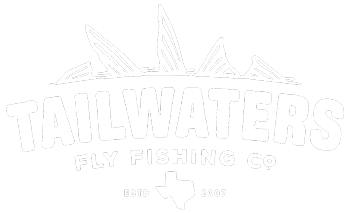
FLY FISHING THE DEVILS RIVER
AUTHOR: LAWSON FISH, CHASE FERGUSON & GARRETT DAVIDSON
PHOTOGRAPHY BY: LAWSON FISH
ABOUT THE DEVILS RIVER
While its name is intriguing enough, The Devils River, located in Southwest Texas is one of the most remote, beautiful, and unspoiled fisheries in the state. Spanning 94 miles in total, the natural spring fed river winds through steep canyons and some of the harshest country in Texas and finally reaches Amistad Reservoir located on the United States and Mexico border. The Devils is known for its crystal clear water, beautiful scenery, and incredible fishing. Although beautiful, the river can be very treacherous and when planning a trip it is very important you are well prepared. Snakes, waterfalls, rapids, and flash floods are just some of the hazards you will encounter- not to mention the river is located in the middle of the desert. Despite these dangers, this hidden oasis provides a cathartic escape from our noisy lives.



TRIP OPTIONS
The most common and sought-after way to experience the Devils River is by float trip. Typically, anywhere from 25-30 miles are completed in four days and three nights. You will need to hire a shuttle service to provide drop off and pick up. Some popular shuttle services include Amistad Expeditions, Devils River Outfitters, and Dacate Expeditions. Most will have kayaks and canoes available for rent if you do not bring your own. Floating the Devils River is no joke; expect long days, lots of paddling, and camping on the river bank each night. The float allows you to absorb all of the beauty and wildlife in the area. The chances of seeing another person are very slight. All food and water is to be packed in, and all waste must be packed out. It is an incredible escape and an awesome experience to have with friends and/or family.
On a recent trip we rented a bunkhouse from Devils River Outfitters, located in an area on the river referred to as Blue Sage. Three nights and two days of fishing, a bed to sleep in and a kitchen to cook all overlooking the river from a cliffside. Gerald Bailey, Devils River Outfitters owner, has kayaks and canoes for use which allowed us to paddle upriver and fish as much as we pleased. A southern wind and a slight river flow allowed for a good pace while fishing.


TARGET SPECIES & FLY SELECTION
The river’s clarity allows for unmatched sight fishing opportunities and a wide variety of species to be seen beneath the surface. The cool spring water allows the Devils River to be one of the southernmost fisheries with smallmouth bass readily available to catch. The river also contains carp, largemouth bass, catfish, longnose and spotted gar, and an impressive array of panfish species. The smallmouth bass reside under and around rock piles and drop-offs created by giant slabs. Fishing in the rapids under a waterfall is also an effective strategy to catch smallmouth. Throwing a crawfish pattern and fishing the water as if it were a trout stream works wonders. As per usual with largemouth bass, the ones that call the Devils River home tend to hang out around vegetation and structure.
The largemouth bass on the Devils River can be caught on multiple flies including poppers, divers, baitfish patterns, and especially crawfish patterns. Smallmouth primarily feed on crawfish in the river but will just as readily eat a fast sinking baitfish pattern with the right presentation. Smaller olive and orange grub patterns with bead chain eyes when presented correctly will do the trick.



NEEDED TACKLE
Typical bass outfits in the six to eight weight range are ideal for casting heavier streamer patterns and large poppers. These also work well for any carp fishing. Having two set ups for both bass and carp will allow for easy access when making a quick cast for the targeted species. If panfish pique your interest, a three or four weight outfit will do the trick. When fishing the surface or directly under, a weight forward floating line with a heavier front taper will help layover larger flies. In some of the deeper pools a sink tip or intermediate line can be useful for getting your fly down, where some of the larger fish hold. Due to water clarity and wary fish, a nine foot, 10-12 lb. fluorocarbon leader is necessary. (See Gear List Below to Shop)



GEAR LIST
- Rods: 6 – 8 weights – Scott Sector, Sage Igniter, Temple Fork Axiom II
- Reels: (Match with Rod Weight) – Redington Behemoth, Lamson Guru, Ross Evolution LTX
- Lines: (Match with Rod Weight) – Rio Smallmouth Bass, Intouch Outbound Short, SA Amplitude Infinity, SA Sonar Sink 25(150G for 6wt)
- Boots: Simms Flyweight Boot, Simms Flyweight Shoe, Simms Flats Sneaker, Simms G4 Boot – Shop Wading Boots
- Quick Dry Pants: Simms Superlight Pant, Howler Brothers Shoalwater Tech Pant Shop Pants
- Rain Jacket: Simms Flyweight Shell Jacket, Patagonia Ultralight Packable Jacket
- Packs and Bags: Fishpond Thunderhead Roll Top Duffle, Fishpond Thunderhead Lumbar, Simms Dry Creek Z Backpack
- Nets: Fishpond Nomad Nets
- Accessories: Simms Guide Plier, Simms Pro Nipper











